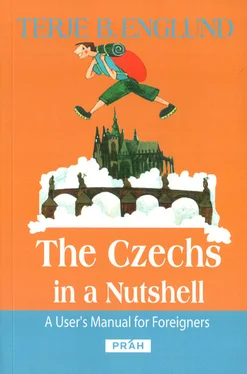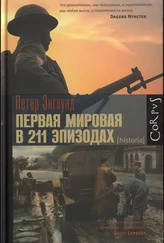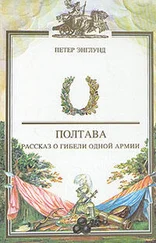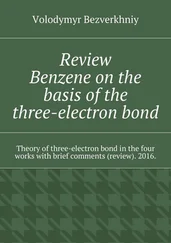Ultimately, this leads us to another, even more academic question. Where on earth is the border between Central and Eastern Europe? Certainly, the Czechs don’t have the slightest doubt that they belong to Central Europe. As do the Hungarians, Slovaks, Austrians, Slovenes, Croatians (see: Balkans) and all the other nations in the former Austro-Hungarian empire.
But what about Poland, whose eastern part constituted the Russian empire’s western-most province for more than a hundred years? And Galicia and Ruthenia, which for centuries belonged to the same monarchy as the Czechs, but now are a part of Ukraine. Where do the Baltic states belong?
The farther east you go, the more diffuse is the perception of the borderline between Central and Eastern Europe. The Polish writer Jacek Wozniakowski once got so frustrated by this vagueness that he decided to settle the question once and for all. The criterion he used was the frequency and the standard of public toilets in different European countries.
Not surprisingly, Wozniakowski found that his Polish motherland is clearly a part of Central Europe, while Belarus is not. Of course, if Wozniakowski’s criterion is applied consequently, several states, which have always regarded themselves to be hard-core Western Europe, could risk ending up in its very Eastern part.
Czechoslovakia’s president Gustav Husák was by all accounts convinced he had made a good deal when he solemnly signed the final act at the Conference on Security and Cooperation in Europe in August 1975.
The Helsinki Agreement, approved by the USA, the Soviet Union and 34 other Western states, finally confirmed the new borders that emerged in Europe after the Second World War, and formally cemented the control that the Russians(and their local vassals like Husák) had taken over Central and Eastern Europe.
Yet the Western countries didn’t want to give the Russians the deal they so overtly longed for without anything in return. That’s why the Helsinki Agreement also contained paragraphs that obliged all countries, regardless of their ideology, to respect basic human rights. But just like his Soviet protector Leonid Brezhnev, Czechoslovakia’s Husák considered this to be liberal mumbo-jumbo without any practical relevance.
Surprisingly enough, it was not the rebellious Polesor the relatively liberal Hungarians, but the oppressed and resigned Czechs (see: Communism), who soon proved Husák completely wrong.
When a Prague court convicted a group of Frank Zappa clones called The Plastic People of the Universe of subversion (a term the Bolshevik regime used for any activity displaying the slightest expression of individual freedom), playwright Václav Haveland a group of his dissident friends published a document, in January 1977, titled Charter 77 (the name was inspired by the English Magna Carta of liberties from 1215) where they modestly reminded the regime of the human rights commitments it had solemnly signed a year and a half earlier in Helsinki.
This step formed the backdrop for one of the most amazing human rights movements in the former East Bloc. Contrary to Poland’s Solidarity trade union, Charter 77 never became a mass movement. It was neither a proper organization, with leaders and rules, but rather a society of people, ranging from socialists to hard-line Catholics, united only by a common adversary — the Bolshevik tyrants.
The first Charter 77 document, which Havel, his playwright-colleague Pavel Kohout, philosopher Jan Patočka, journalist Jiří Dienstbier, Prague Spring’s minister of foreignaffairs Jiří Hájek and some 200 other people tried to publish via the national news agency ČTK (of course the agency rejected it, but Western media like Le Monde and The Times made it worldfamous overnight) caused wild panic among the Bolshevik leadership. Jaromír Obzina, Minister of Interior at that time, said in interviews after the Velvet Revolutionthat the comrades believed the Charter had great potential for becoming a mass movement, and therefore they immediately launched a hysterical counterattack.
Less than a month after Charter 77 was published in the West and broadcast to Czechoslovakia by Radio Free Europe, the regime summoned every actor, musician, composer, writer or painter in the country to a mass rally in the National Theatre.
After actress Jiřina Švorcová and a couple of other Bolshevik mascots had reeled off hair-raisingly pathetic proclamations condemning the Charter signatories as samozvanci a ztroskotanci (self-appointed [critics] and [morally] bankrupt people) who had willingly betrayed their “socialist mother country” to serve the Western imperialists, the entire cultural elite was marched in front of the television cameras to sign an “Anti-Charter” in defence of the regime. A week later, the depressing show was repeated with Karel Gottand hundreds of other pop music and television stars in the leading roles.
It’s both a comic and a tragic expression of life in Bolshevik Czechoslovakia that more than 7,000 Czech and Slovakcultural celebrities signed the Anti-Charter without hesitation, and thus condemned a document they not even were allowed to read. And if they had read it, they would have seen that the “subversive authors” only referred to laws that the Bolsheviks themselves had promised to respect when they signed the Helsinki Agreement a year and a half earlier.
Eva Kantůrkové, a writer and Charter 77 signatory, comments on this situation very aptly: “The Anti-Charter was a very effective weapon for the regime. The faithful had their faith strengthened, while the opportunists were assured that it paid to behave opportunistically.” Needless to say, many of the celebrities who blindly signed the Anti-Charter in 1977 are still celebrities.
From the publication of its first document in January 1977 until the Velvet Revolution threw the Bolshevik regime into history’s dustbin in 1989, fewer than 1,900 Czechs and Slovaks officially signed the Charter 77 document. Considering that the population numbered 15 million people, this is perhaps not such a dazzling a figure. Considering the constant police harassment, jail sentences (Havel himself served more than four years behind bars) and the loss of jobs and educational opportunities, combined with social excommunication and strong pressure to emigrate, it’s impressive that at least 1,900 individuals were brave and unselfish enough to risk their very existence in the name of some abstract ideals.
Yet the Charter 77 signatories’ courage and rare idealism have not automatically secured them common respect and eternal glory. True, the Civic Forum, which took political power after the Velvet Revolution, was totally dominated by Charter signatories, and hundreds of other Charter people were, quite deservedly, rewarded with official postings as ambassadors, mayors, professors and rectors. But as things usually go in Czech history, the number of opponents to a rotten regime quadruples at the moment the rotten regime is overturned. So as soon as the post-revolutionary euphoria had evaporated, wild discussions broke out about Charter 77’s real impact on the Bolshevik regime.
One of the less creative and most common excuses for not supporting Charter 77 is that the movement “was dominated by reform communists”. As Miroslav Kalousek, a Christian Democrat politicianof the post 1989-generation puts it: “I had too little courage, while the Charter had too many Marxists.”
This is, however, quite transparent demagogy. Even though some leading Charter 77 signatories never concealed that they had once been members of the Communist Party, the movement’s official standpoints were always painstakingly formulated to defend human rights issues in general. Some of the Charter’s most high-profile signatories, such as Václav Havel, the Catholic priest Václav Malý or actor Pavel Landovský could hardly be accused of communist sympathies, and in the trio that fronted the Charter as its spokespersons (every year, three new people were elected) there was never more than one ex-communist at a time.
Читать дальше








![Theresa Cheung - The Dream Dictionary from A to Z [Revised edition] - The Ultimate A–Z to Interpret the Secrets of Your Dreams](/books/692092/theresa-cheung-the-dream-dictionary-from-a-to-z-r-thumb.webp)



